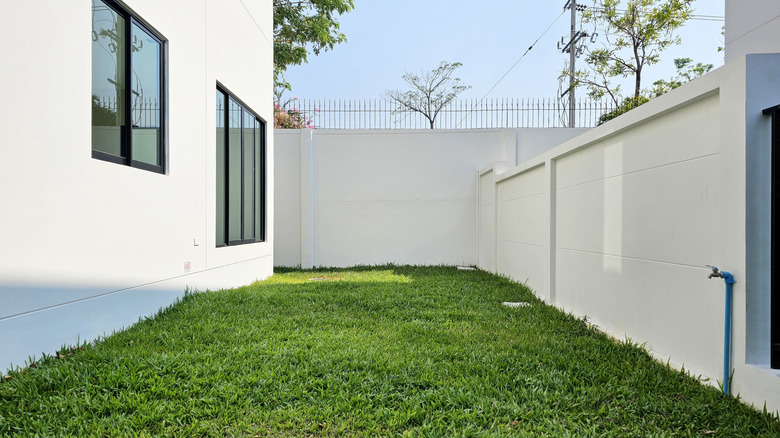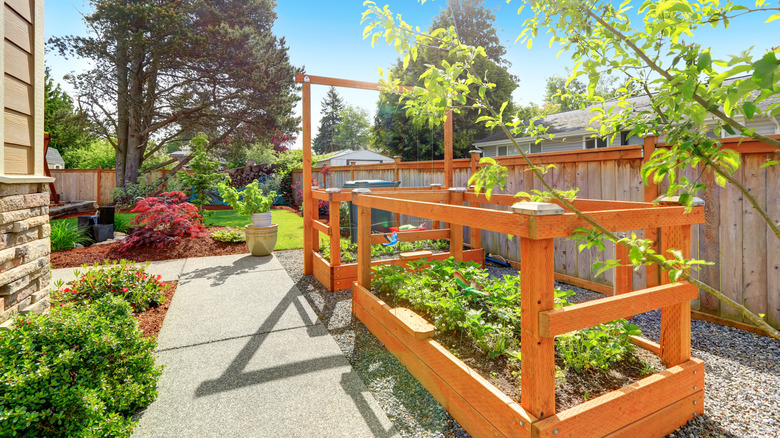Not Sure How To Use Your Side Yard? Here's A Simple Idea To Liven Up Your Space
We may receive a commission on purchases made from links.
Do you have a long and narrow side yard that's being wasted because you're not sure what to do with it? A simple idea to liven up this space is to install some raised garden beds and turn this underutilized area into a thriving and productive vegetable and herb garden. As long as it gets plenty of sunlight, this is actually the perfect space to grow lots of luscious edible plants because it's within easy reach of the house and a great use of an otherwise forgotten part of your yard. In fact, did you know that Martha Stewart ditched her traditional veggie gardening method in favor of raised beds?
Raised beds are ideal for this type of setup because the soil is contained and not likely to spill onto your path if you have one. If there's no path, you'll want to put one in, either to one side or in the middle, if the space is wide enough. This can be as simple as a gravel walkway, or you might want to get fancy and use pavers. Make sure it's wide enough for a wheelbarrow or cart (around 3 feet) to allow you to fill the raised beds with soil and top up the mulch. It's even better if there's an outdoor tap nearby to connect a watering system; otherwise, you'll need a hose that's long enough to reach. For this, you might want to check out the best methods for watering your raised garden beds.
Setting up your vegetable garden
When it comes to selecting the right beds, you can either choose prefabricated ones, like these Vego Garden Aluzinc Raised Garden Bed Kits, or make them yourself out of materials such as timber, concrete blocks, or bricks. As your beds are going to be accessible just from one side because they're next to the house or your fence, they should be no wider than 2 feet to keep everything within arm's reach. Depending on the length of your side yard, it's a good idea to install several raised beds and leave a little space between each one to allow easy access.
Once your beds are in place, it's time to fill them with good-quality topsoil and compost. Remember that the soil should be well-draining, so you might want to add some coarse sand as well. You may also like to install a few trellises at the back for climbing or taller-growing vegetables such as tomatoes and cucumbers, and then plant smaller varieties in front. Don't forget to add some lovely herbs and flowering plants around the edges. Add a layer of mulch over the top of the soil to help retain moisture. As a final note, if your side yard is shaded for part of the day, you can still use your beds to grow shade-loving perennials and add a few vegetables such as lettuce, spinach, and radishes that benefit from some shade. Still need inspiration? Check out these clever designs for raised garden beds.

